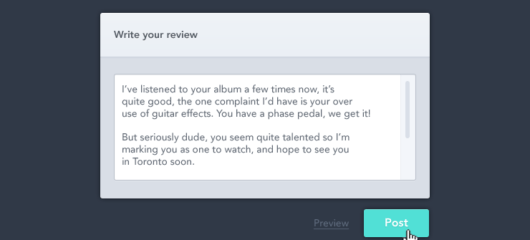
Why ‘mobile first’ may already be outdated
Main illustration: Tim Gough
What matters is screens, not devices. Mobile app driven companies are now building complementary web apps.
For a number of years now, we’ve all been hit over the head time and again with “mobile first” and “mobile only”. Those of us building software since before the iPhone have hacked our brains, our processes, our companies, to ensure we start thinking “mobile first” rather than web first. There are books, courses, and conferences about being “mobile first”. But if “mobile” is our future, why are almost all the most successful mobile driven businesses building web apps designed for larger screens? All these mobile businesses have recently built web apps for use on large screens:
Uber



Postmates

Waze

Even the messaging apps are building web apps for large screen including Facebook Messenger and WhatsApp:

Screens, not devices
There is still much fast paced change regarding what size screen is best suited for different contexts. 12 months ago, it was all about phones and tablets and people laughed at the new phablet category. Fast forward to today, and the phablet is the most popular form for a new device (although thankfully we’ve dropped the janky term), and tablet sales are stagnating. The optimal screen size is still a moving target. Not to mention how small screens on wrists might change things again in 12-24 months.
So how should we be thinking about all this? I believe we’ve been looking at “mobile” using the wrong frame of reference. For years I’ve pushed the idea that “mobile” is not about devices, it’s about access to consuming and publishing information. For me, obsessing about specific devices was a bad path (they change too frequently), obsessing about iOS versus Android OS was a bad path (they are both important) and obsessing about phone versus tablet was a bad path (they have merged into one larger category of portable screen and continue to evolve all the time). Information via screens not devices – this is the key idea.
Somewhat ironically, when thinking about product development, the only screen size we can rely on is the big one. Most people sit in front of a giant monitor for a huge chunk of their day. The dominant screen for work is still a large one, and that will likely not ever change. Whether that is a laptop, or a desk monitor.
So if you’re designing and building software to sell to employees or companies, and that includes everything from enterprise software to calendar and to-do apps, you better be thinking about big screens as well as small ones. It’s not just about mobile-first.
In fact, if you’re designing and building an app that has any type of content creation that goes beyond 140 characters or a photo, it’s likely better performed on a large screen. I didn’t write this post on a phone, and it’d be very painful to try on a tablet. I needed my big screen. No two ways about it, large screens are better for many types of input.
Is “mobile only” a niche type of business?
It’s true that for many consumer services, usage on mobile devices is much higher than desktop devices. What’s not true is that this is a universal pattern. It’s true that for many people their mobile screen is their primary screen most of the time. What’s not true is that this is the only screen that matters. It’s true that our world is being filled with more and more screens. What’s not true is that all these new screens are phones.
So if what matters is screens not devices, then the idea of a “mobile only” business may in fact be a small niche of consumer businesses. As most of these disruptive mobile businesses mature, they realise they need to serve their users when they are in front of larger screens as well as smaller ones, and that happens a lot more frequently than they might have initially thought. Mobile screens may still be their most important and dominant channel, but it is not their only one.
Also consider that other large screens, such as TVs, will evolve and mature and run better web-driven software.
To get a better sense of this, think about how most people go about their day, and the primary screen they access:

The key to thinking through this is the amount of time most of us spend in work, in front of a large screen:

Source: Mary Meeker Internet Trends Report 2014
Is “mobile” secondary for business software?
Many businesses being advised to go all in on mobile screens, should consider how often they are accessed while people are in work. Software that people probably shouldn’t, but do, look at on their work computer: news, sports, social, messaging, personal email. The large screen matters.
Now imagine that you actually build software specifically for people to use in work. This may be software for getting work done, such as Google Docs, Intercom, Slack, Basecamp, Trello, etc. The likelihood now is that the larger screen is the most important one. The large screen app is more important than the mobile app. The mobile app plays a different role to the large screen app, and in many cases a supporting role.
“Mobile” service businesses will likely fail
Service businesses pitching themselves as “mobile only” or even “mobile first” (for example mobile marketing services, mobile ad services) are likely setting themselves up for some short term success (as businesses look for mobile “experts” to help them get up to speed) but long term failure. In order to offer a complete service, they will need to track people and behaviour across all screens. The goal of “only advertise to people on phones” is rare, and only exists because of the temporary state we’re in with “mobile only” products. This is really critical to think about, and is why at Intercom we’re building to service web, iOS and Android equally. We track people as they move from screen to screen, giving the complete picture of their digital activity. Only tracking someone on a “mobile device” is an incomplete picture and will result in poor targeting of messages and ads.
Focus on Jobs, then screens, but never devices
If “mobile first” is no longer your dogma, then what is? At Intercom our dogma is the Jobs-to-be-Done framework. Focusing on what Jobs your users are trying to do. Servicing those Jobs where they happen. Servicing them with the right depth of product experience: maybe a glance on a watch is best, maybe a 40 inch screen dashboard view is best. Servicing them in a way that takes advantage of the situational context of use – no one is bringing their iMac to the beach, and no-one is writing the board deck on their phone. So think about the screen best suited for input, and the screen best suited for output.
Closing notes
I’d love to hear people’s thoughts here. Does this hold true for what you design and build? Are you a mobile driven business contemplating building a web app for larger screens?
For a truly inspirational talk about screen driven thinking, I highly recommend Wilson Miner’s When We Build talk.
Check out how we think about building Intercom for mobile driven businesses.
Like what you read here? Why not come and work with us? We’re hiring.






